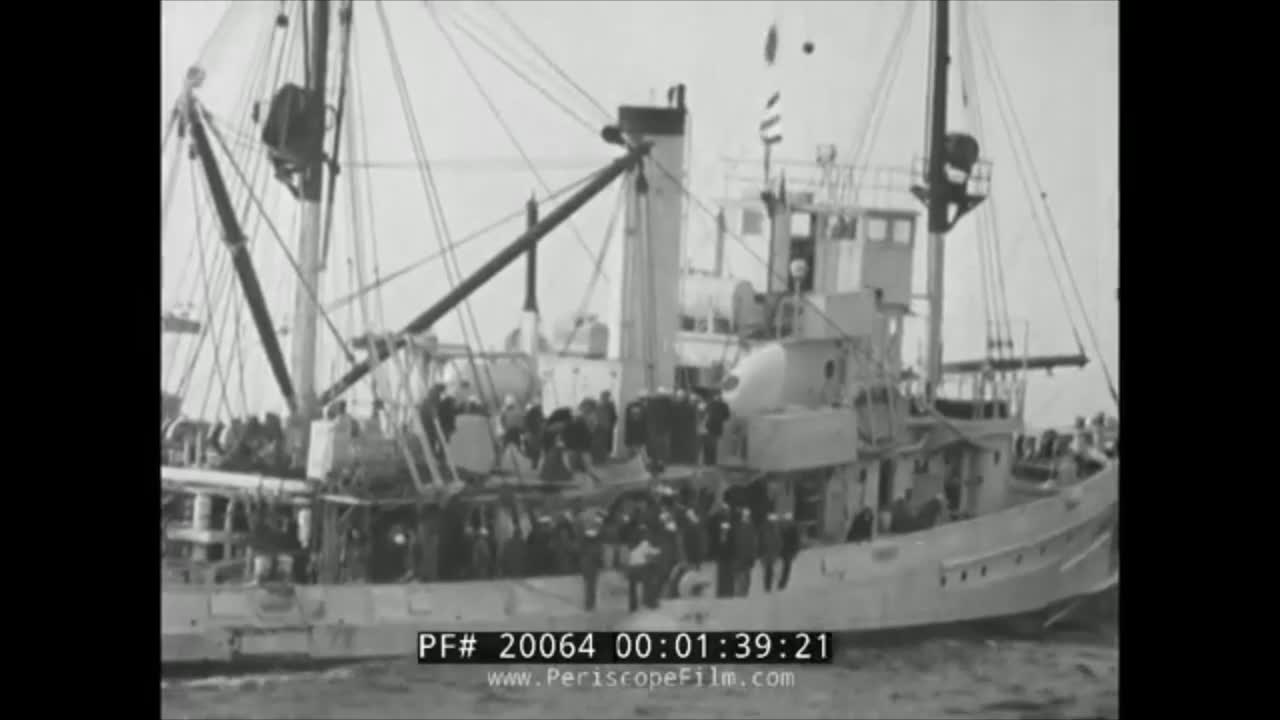Premium Only Content

USS Squalus SS-192 Disaster
We are a Public Domain sharing community,with a focus on American life pre-1970's..
These videos are for Historic and Cultural preservation. See something interesting?
We encourage viewers to add comments and, especially, to provide additional
information about our videos by adding a comment!
USS Sailfish (SS-192), was a US Sargo-class submarine, originally named Squalus. As the Squalus, the submarine sank off the coast of New Hampshire during test dives on 23 May 1939. The sinking drowned 26 crew members, but an ensuing rescue operation, using the McCann Rescue Chamber for the first time, saved the lives of the remaining 33 aboard. The submarine was salvaged in late 1939 and decommissioned.
The submarine was recommissioned as the Sailfish in May 1940, and conducted numerous patrols in the Pacific War during World War II, earning nine battle stars. She was decommissioned in October 1945 and later scrapped; the conning tower remains on display at Portsmouth Naval Shipyard in Kittery, Maine.
Sinking of Squalus and recommissioning
On 12 May 1939, following a yard overhaul, Squalus began a series of test dives off Portsmouth, New Hampshire. After successfully completing 18 dives, she went down again off the Isles of Shoals on the morning of 23 May at 42°53′N 70°37′W. Failure of the main induction valve (the means of letting in fresh air when on the surface)[6][7] caused the flooding of the aft torpedo room, both engine rooms, and the crew's quarters, drowning 26 men immediately.[8] Quick action by the crew prevented the other compartments from flooding. Squalus bottomed in 243 ft (74 m) of water.
Squalus was initially located by her sister ship, Sculpin. The two submarines were able to communicate using a telephone marker buoy until the cable parted. Divers from the submarine rescue ship Falcon began rescue operations under the direction of the salvage and rescue expert Lieutenant Commander Charles B. "Swede" Momsen, using the new McCann Rescue Chamber. The Senior Medical Officer for the operations was Dr. Charles Wesley Shilling. Overseen by researcher Albert R. Behnke, the divers used recently developed heliox diving schedules and successfully avoided the cognitive impairment symptoms associated with such deep dives, thereby confirming Behnke's theory of nitrogen narcosis. The divers were able to rescue all 33 survivors on board (32 crew members and a civilian) the sunken submarine. Four enlisted divers, Chief Machinist's Mate William Badders, Chief Boatswain's Mate Orson L. Crandall, Chief Metalsmith James H. McDonald and Chief Torpedoman John Mihalowski, were awarded the Medal of Honor for their work during the rescue and subsequent salvage. The successful rescue of the Squalus survivors is in marked contrast to the loss of Thetis in Liverpool Bay just a week later.
The navy authorities felt it important to raise her as she incorporated a succession of new design features. With a thorough investigation of why she sank, more confidence could be placed in the new construction, or alteration of existing designs could be undertaken when cheapest and most efficient to do so. Furthermore, given similar previous accidents in Sturgeon and Snapper (indeed, in S-5, as far back as 1920), it was necessary to determine a cause.
American Media Ephemera
Truth Social
@AmericanMediaEphemera
#ephemera #educational #culture #knowledge #news
#lifestyle #christianfamily #nuclearfamily #truth
#socialguidance #Religion #conservative #rights
#Republican #DIY #elections #makesocialmediafunagain
-
 LIVE
LIVE
Right Side Broadcasting Network
10 days agoLIVE REPLAY: President Donald J. Trump Keynotes TPUSA’s AmFest 2024 Conference - 12/22/24
4,608 watching -
 4:31
4:31
CoachTY
1 day ago $1.09 earnedCOINBASE AND DESCI !!!!
158K11 -
 10:02
10:02
MichaelBisping
1 day agoBISPING: "Was FURY ROBBED?!" | Oleksandr Usyk vs Tyson Fury 2 INSTANT REACTION
84.1K13 -
 8:08
8:08
Guns & Gadgets 2nd Amendment News
2 days ago16 States Join Forces To Sue Firearm Manufacturers Out of Business - 1st Target = GLOCK
114K88 -
 10:17
10:17
Dermatologist Dr. Dustin Portela
2 days ago $1.21 earnedOlay Cleansing Melts: Dermatologist's Honest Review
151K14 -
 1:02:20
1:02:20
Trumpet Daily
2 days ago $12.42 earnedObama’s Fake World Comes Crashing Down - Trumpet Daily | Dec. 20, 2024
103K68 -
 6:29
6:29
BIG NEM
1 day agoCultivating God Mode: Ancient Taoist NoFap Practices
78.9K20 -
 30:53
30:53
Uncommon Sense In Current Times
2 days ago $0.86 earned"Pardon or Peril? How Biden’s Clemency Actions Could Backfire"
90.8K10 -
 40:01
40:01
CarlCrusher
1 day agoSkinwalker Encounters in the Haunted Canyons of Magic Mesa - ep 4
81.9K10 -
 59:44
59:44
PMG
2 days ago $2.06 earned"BETRAYAL - Johnson's New Spending Bill EXPANDS COVID Plandemic Powers"
81.5K51